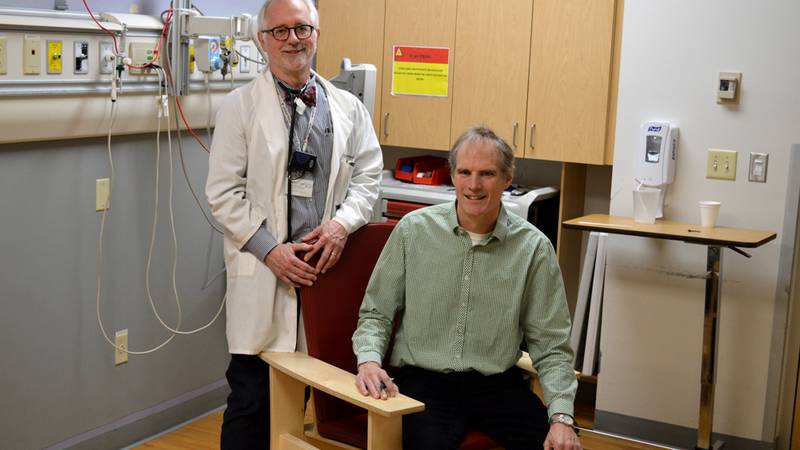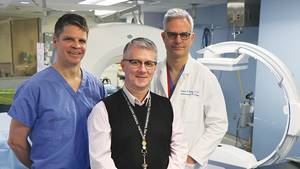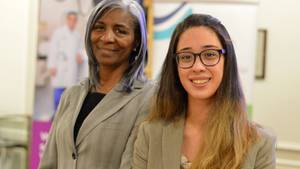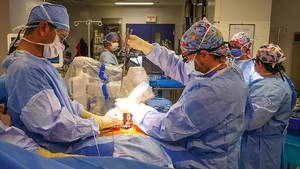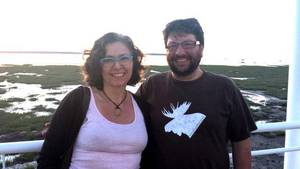According to QEII emergency physician Dr. Sam Campbell, emergency care is traditionally very focused on finding a cure for an immediate health problem. This method of care is beneficial for the average and otherwise healthy patient, Dr. Campbell says, but in the case of an older generation, their health concerns could be more complex.
The inherent frailty of the aging population, regardless of their resolve to remain independent in their day-to-day life, becomes a challenge. Time spent in bed and away from their daily routine, according to Dr. Campbell, risks developing into a much more complicated medically-based, health issue.
The idea of “bed rest is best” for a speedy recovery is a dated one. According to Dr. Campbell, there continues to be ample data in support of getting senior emergency patients out of bed faster to improve outcomes. He notes that not only are there risks of cognitive issues, whereby they have been removed from their routine, but also there are physical drawbacks upon an already frail patient. This could lead to further physical deterioration and a harder transition back home.
“Even if the healthiest person were to lay in bed all day, their muscles would start deteriorating, but they would have enough energy on reserve to regenerate,” says Dr. Campbell. “An older patient is more sensitive to how their body tends to ration those reserves.”
Dr. Kenneth Rockwood, a QEII geriatrician and Director of Geriatric Medicine Research, agrees with Dr. Campbell, elaborating that for senior patients, it continues to be even more complicated than the worries surrounding muscle deterioration.
“If you lay about for an increased amount of time, this appears to accelerate, or even to induce inflammatory processes.”
It is this concern that motivates Dr. Rockwood, and other like-minded physicians, nurses and healthcare workers, to push specific senior care protocol that has their senior patients moving quickly out of the emergency room bed to a chair.
“Early mobilization allows you to counteract the inflammation that can develop during their time laying down and that’s why getting them up earlier is key, even for patients admitted to Intensive Care Units. This mobility, or lack thereof, is a large part the reason that an already ill person can become more ill.” Putting the needs of patients first, tangible changes can be seen within the walls of the QEII’s emergency department triage areas. Enter the latest tip-proof geriatric chairs.
“It’s intriguing how a good design can facilitate getting the behaviour you want,” says Dr. Rockwood.
Dr. Rockwood and local architect, Carlo Testa, who both taught and mentored at NSCAD University, helped design the latest in modern chairs seen today in the QEII’s emergency department.
The chairs, unlike their predecessors, provide an extremely steady base that eliminates the possibility, and therefore the fear, of toppling or tipping the chair upon standing or sitting down. “All the chairs are assembled locally and are a good reflection of what we strive for in health care — the bringing together of people and the implementation of local innovations,” says Dr. Rockwood.
The success of these chairs is demonstrated on a daily basis through the success experienced by the patients and the quickening pace at which they are able and comfortable to return home.
“We have to routinely understand how function works, how memory works, how balance works and how important it is for people to be able to move,” concludes Dr. Rockwood.
“And that starts in the emergency department.”

